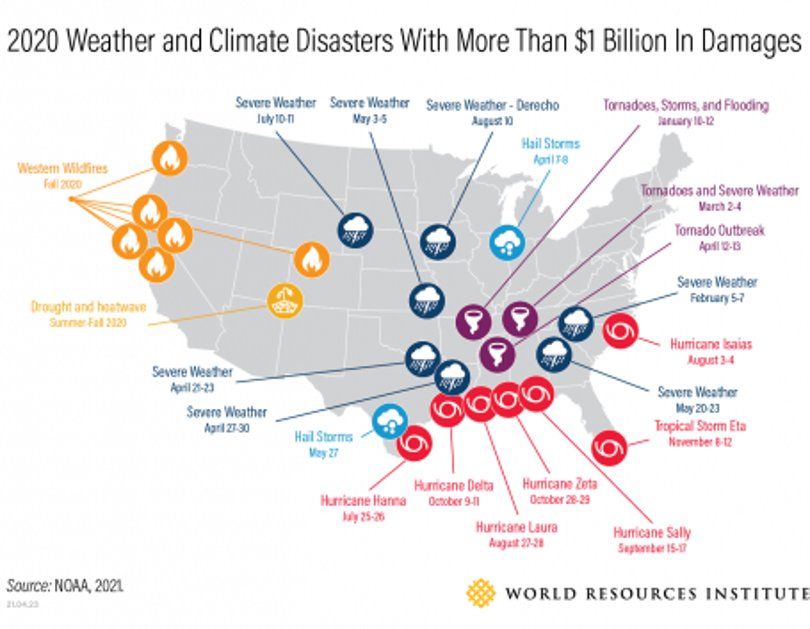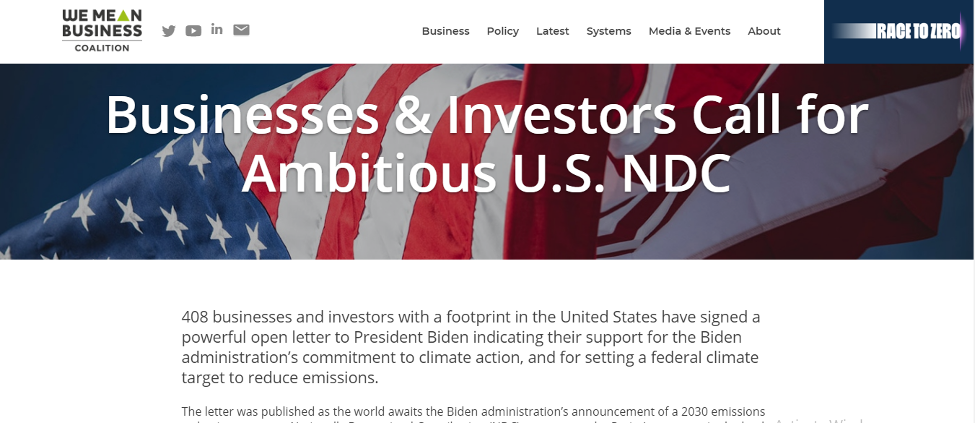
In April 2021, President Joe Biden announced a new target for the United States during a virtual global leaders’ climate summit: to reduce greenhouse emissions by at least 50% by 2030. The daring target is more than double the nation’s earlier commitment to reduce emissions under the 2015 Paris Agreement. In the president’s address, while announcing the vision to about 40 world leaders, he remarked: “we really have no choice; we have to get this done.”
While the plan is only in its preliminary stages, the target has left many wondering how this will be achieved and how it will affect individuals and businesses. This post will explore the key aspects of this plan and what it means for individuals and companies.
Table of Contents
Key Aspects of the 2030 Target
Here are a few key facts to note regarding the president’s declaration:
- The promise, known as the “nationally determined contribution (NDC),” is to reduce greenhouse gas emissions to 50% to 52% by 2030 from the baseline year of 2005.
- The plan fits into the country’s goal of economy-wide net-zero emissions by no later than 2050.
- The National Climate Task Force has been set up to establish this new 2030 emissions target.
As mentioned earlier, the goal is to reduce emissions to at least 50%. To put that target in perspective, Obama set out to cut emissions 26% to 28% below 2005 levels by 2025. So far, the United States has not met half of Obama’s target, and that’s why Biden’s plan is daring.
The Trump administration pulled out of the Paris Agreement, stalling the nation’s climate change progress for years. Hours after being sworn in as president, Biden moved to reinstate the US in the global pact. The 2030 reduction target announcement before world leaders signaled the new administration’s aggressive commitment to climate change.
The target fits into the administration’s $2 trillion plan to recover economic growth, create better jobs, improve health, overhaul the country’s infrastructure, and ensure environmental justice. For more information on the targets, you can read Biden’s 2030 emission reduction pledge fact sheet that the White House released.
What it Means for Individuals and Communities
Biden’s target is good news for individuals across the United States. For years, climate change challenges have affected the economy. Take 2020, for instance. According to the World Resources Institute, that year had an alarming 22 climate and weather disasters, totaling more than $95 billion in damages.

To fulfill the climate change pledge, the administration plans to invest in infrastructure and innovation. Alongside this, the administration will increase access to clean air and drinking water. Environmental justice is another key aspect of this pledge.
The administration plans to leverage this target to “cut emissions and energy costs by supporting efficiency upgrades and electrification in buildings.” The National Climate Task Force is exploring multiple pathways to ensure emission reductions. Approaches include building sustainable housing, the introduction of energy codes for buildings, and more.
The proposed measures mean that Americans must get ready to make lifestyle changes in the years to come. For example, as part of the proposal, Biden plans to spend north of $174 billion to speed up the switch to electric vehicles.
The expense would include tax credits to purchase Electric Vehicles (EVs) and the creation of a network of more than 500,000 charging stations. These measures are aimed to hasten the transition to EVs.
The pledge is not just good news for the environment; it’s also good news for the American labor market. Creating jobs and tackling climate change go hand-in-hand, so the Biden proposal is, by extension, a job creation promise. Hence the name, The America Jobs Plan.
Despite the problems caused by COVID 19, Americans can look forward to an economic recovery that expands supply chains, pushes manufacturing, and creates millions of good-paying jobs.
What the Pledge Means for Industries
The president’s pledge cuts across various sectors, including transportation, agriculture, and oil and gas. Four hundred eight companies, including Apple, Microsoft, Google, Biogen, HP, and Coca-Cola, were all signatories to a letter that charged the government to commit to a bold new emission reduction plan. You can read the letter here.

There are three key things companies must keep in mind regarding this pledge. First, the government aims to reduce carbon emissions from industrial processes through carbon capture and encouraging renewable energy production. Industrial facilities should be ready to consider alternative energy sources, including wind, solar, and hydrogen sources, for their production.
Second, manufacturing facilities must be even keener on reducing their carbon emissions. Part of this process will involve setting baselines by using a continuous emissions monitoring system to monitor emissions. Then, utilizing those baselines to set aggressive emissions reduction targets. The pledge by the government may result in tighter regulation and monitoring through the Environmental Protection Agency (EPA).
Finally, one key cog in the wheel of Biden’s promise is innovation. Sectors such as clean technology, infrastructure building, electricity, oil and gas, and transport are sure to see an uptick in production demands. But the Biden administration is looking for more than average production; they want manufacturers that develop innovative solutions to combat problems. It might be time to pivot your business to innovate in the area of clean technologies.
The Decisive Decade
In President Biden’s own words, this word is a “decisive decade.” Biden also said during the summit that “This is the decade that we must make decisions to avoid the worst consequences of the climate crisis.” While this commitment is commendable, several people have wondered if this plan is feasible at all.
Environment-focused groups like Natural Resources Defense Council and EDF have released reports showing that while Biden’s target is a stretch, it is possible. The key, however, is to get all stakeholders on board. Based on the new government’s aggression and commitment, the next ten years are certainly worth looking forward to.